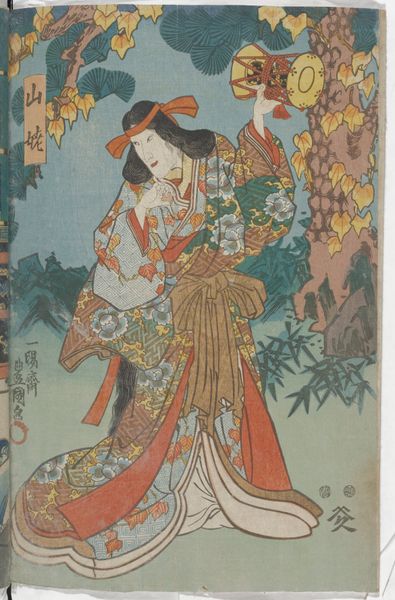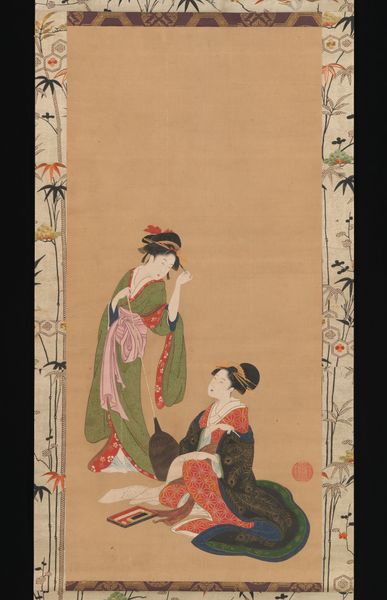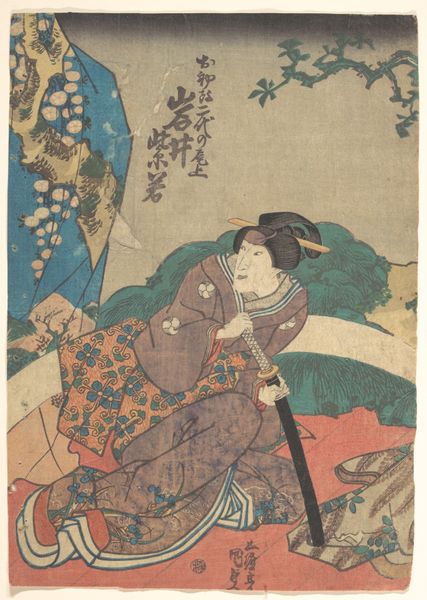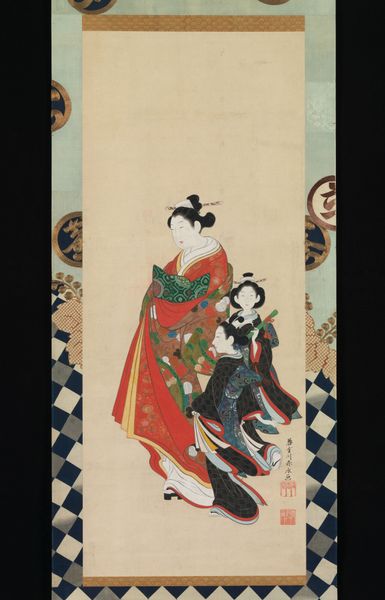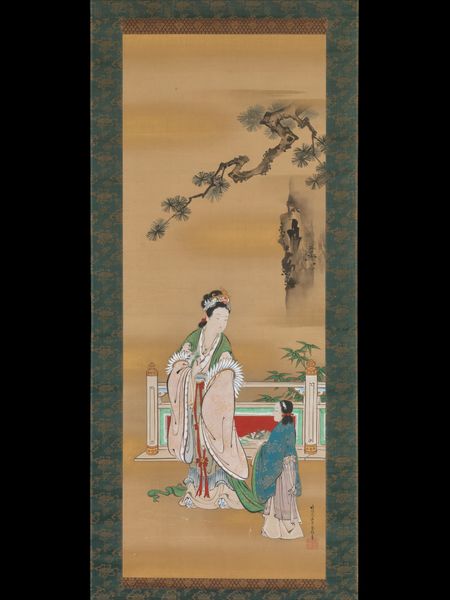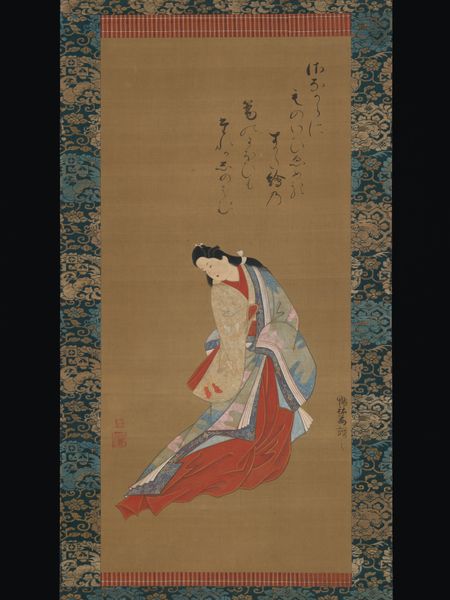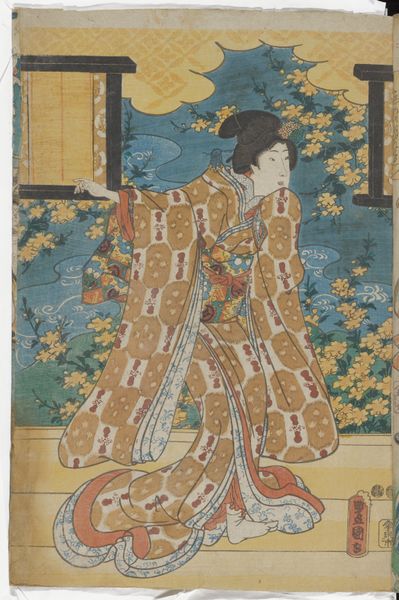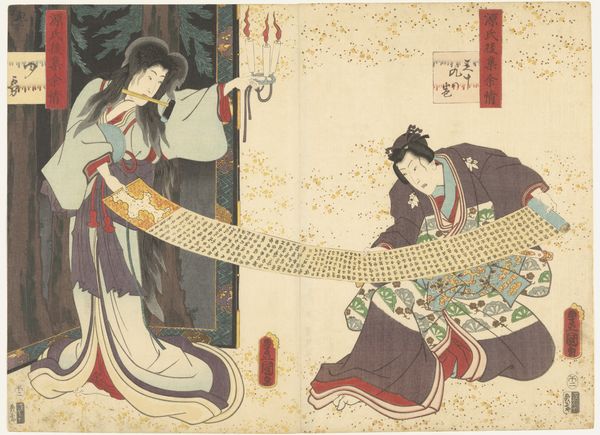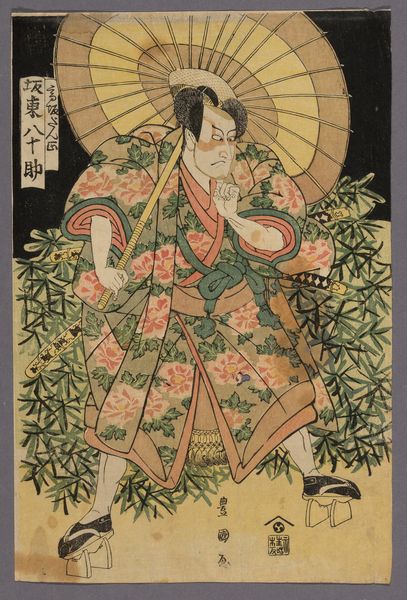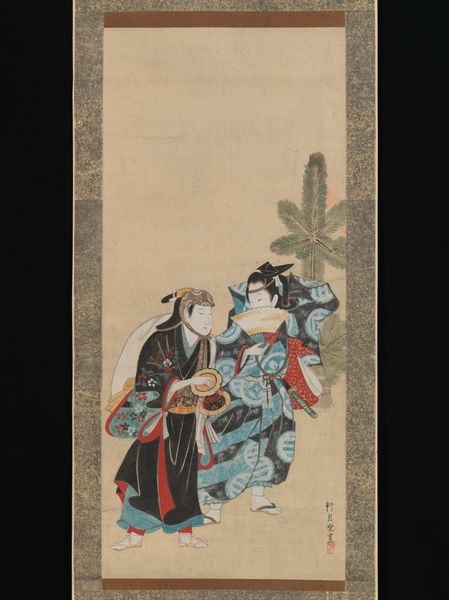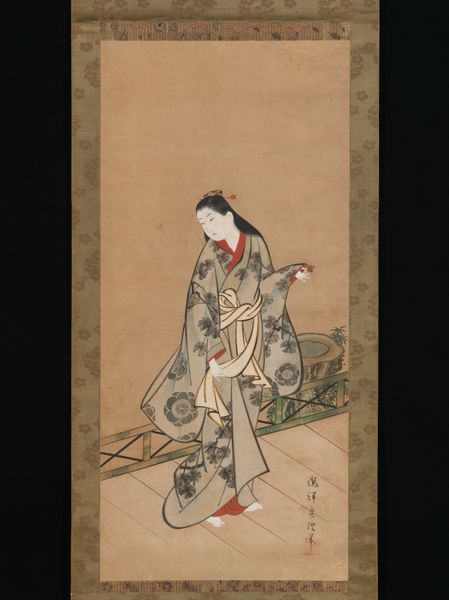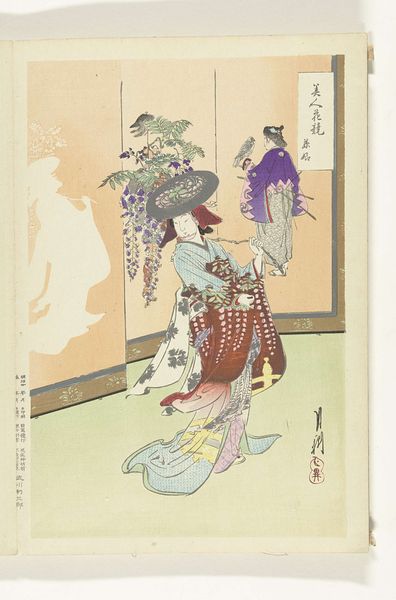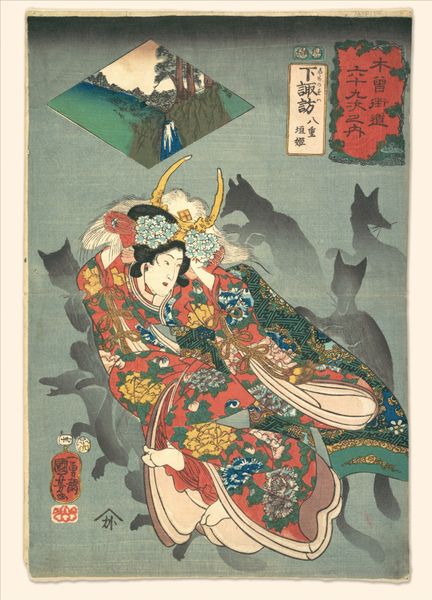
painting
#
portrait
#
folk-art
#
painting
#
asian-art
#
ukiyo-e
#
folk art
#
naive art
#
genre-painting
Dimensions: Image: 31 1/8 × 15 13/16 in. (79 × 40.2 cm) Overall with mounting: 51 3/16 × 19 5/16 in. (130 × 49 cm) Overall with knobs: 51 3/16 × 21 1/4 in. (130 × 54 cm)
Copyright: Public Domain
Kakondō painted this scroll with ink and color on silk, depicting a courtesan and attendant in early spring. The motifs of pine and plum, rendered meticulously, carry profound cultural significance. In Chinese and Japanese art, the pine symbolizes resilience, longevity, and steadfastness, while plum blossoms represent renewal and the coming of spring after winter's hardships. Together, they form a powerful symbol of enduring beauty and perseverance. We can trace these symbols back centuries, observing their recurrence in various art forms. Consider the ancient Chinese literati paintings, where the pine and plum were often paired to express virtues of scholarly reclusion and moral fortitude. The endurance of these images speaks to a collective longing for stability and hope, themes that resonate across cultures and epochs. The gentle gestures and serene expressions of the figures evoke a deep sense of tranquility. These images are not merely representations but carriers of emotional weight, inviting viewers to partake in a timeless meditation on nature, beauty, and the cycles of life.
Comments
No comments
Be the first to comment and join the conversation on the ultimate creative platform.
